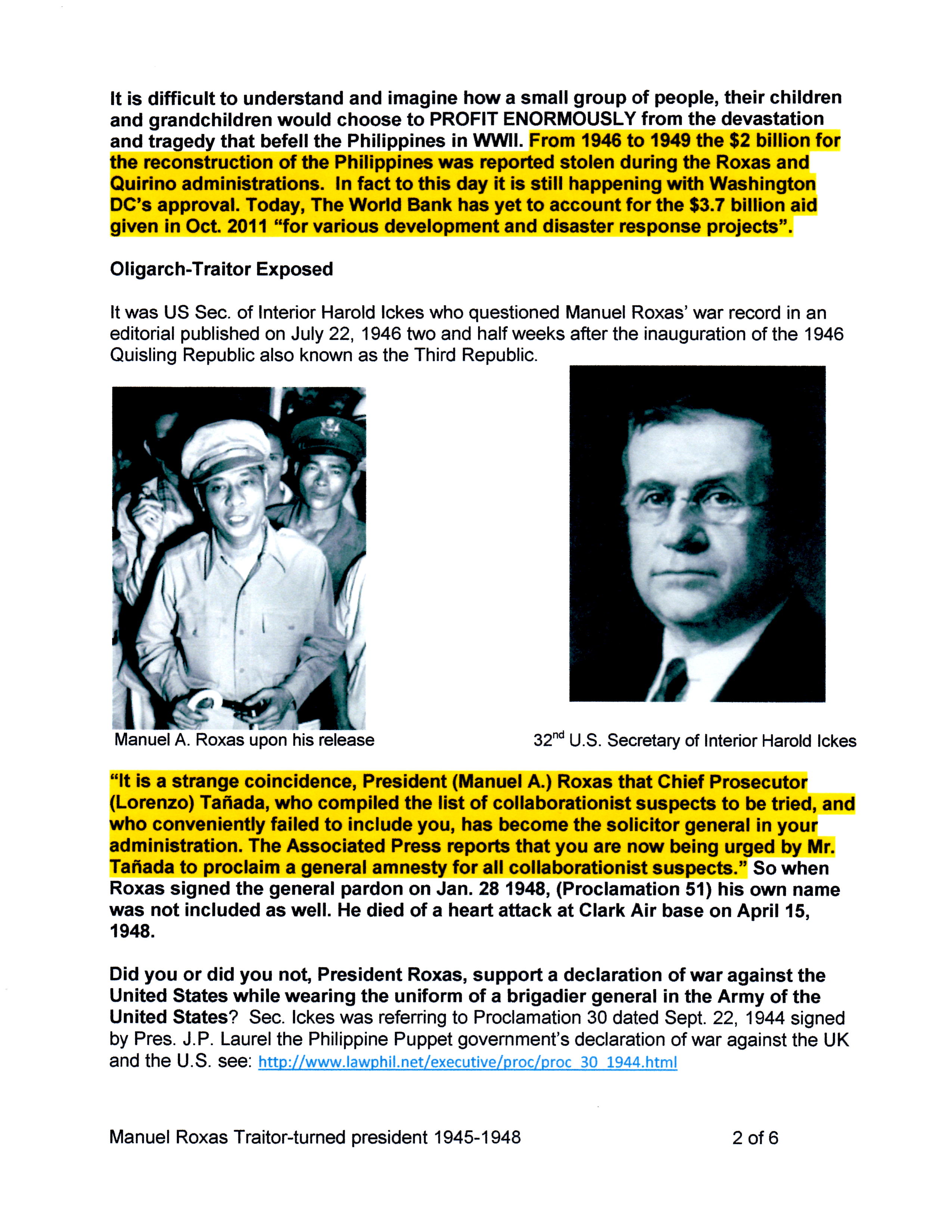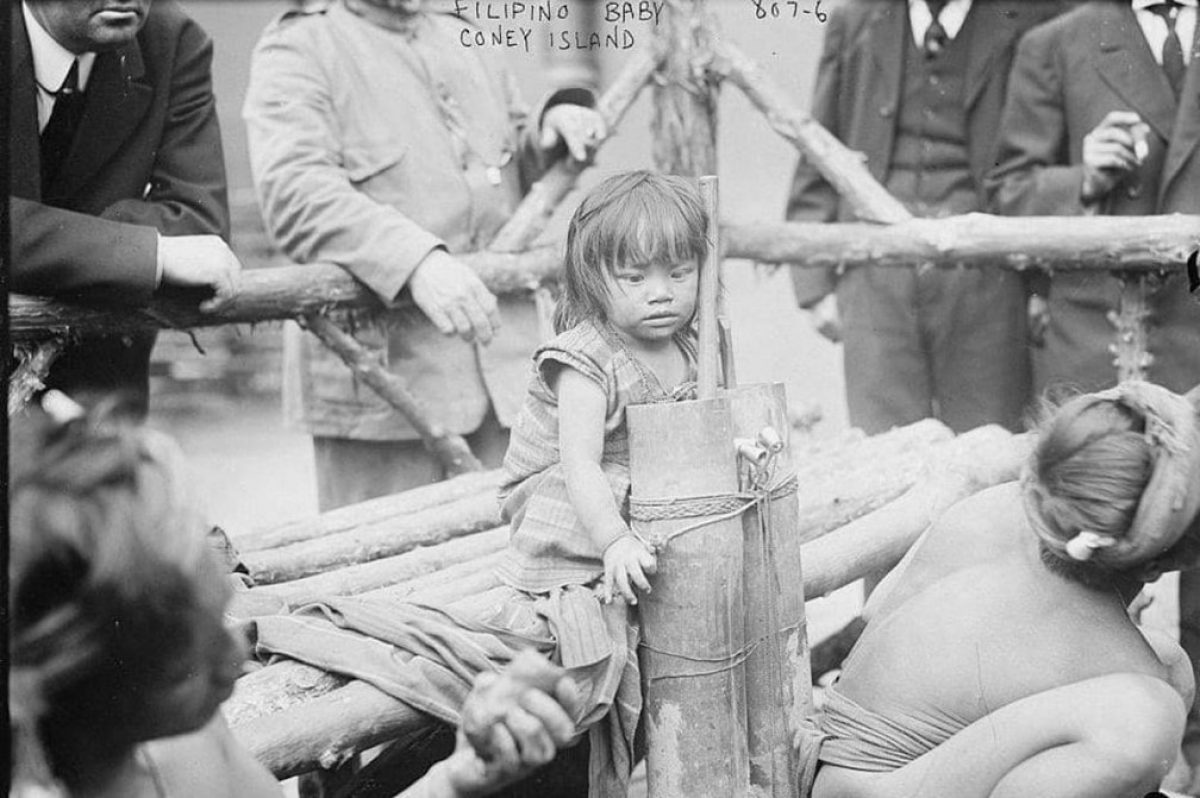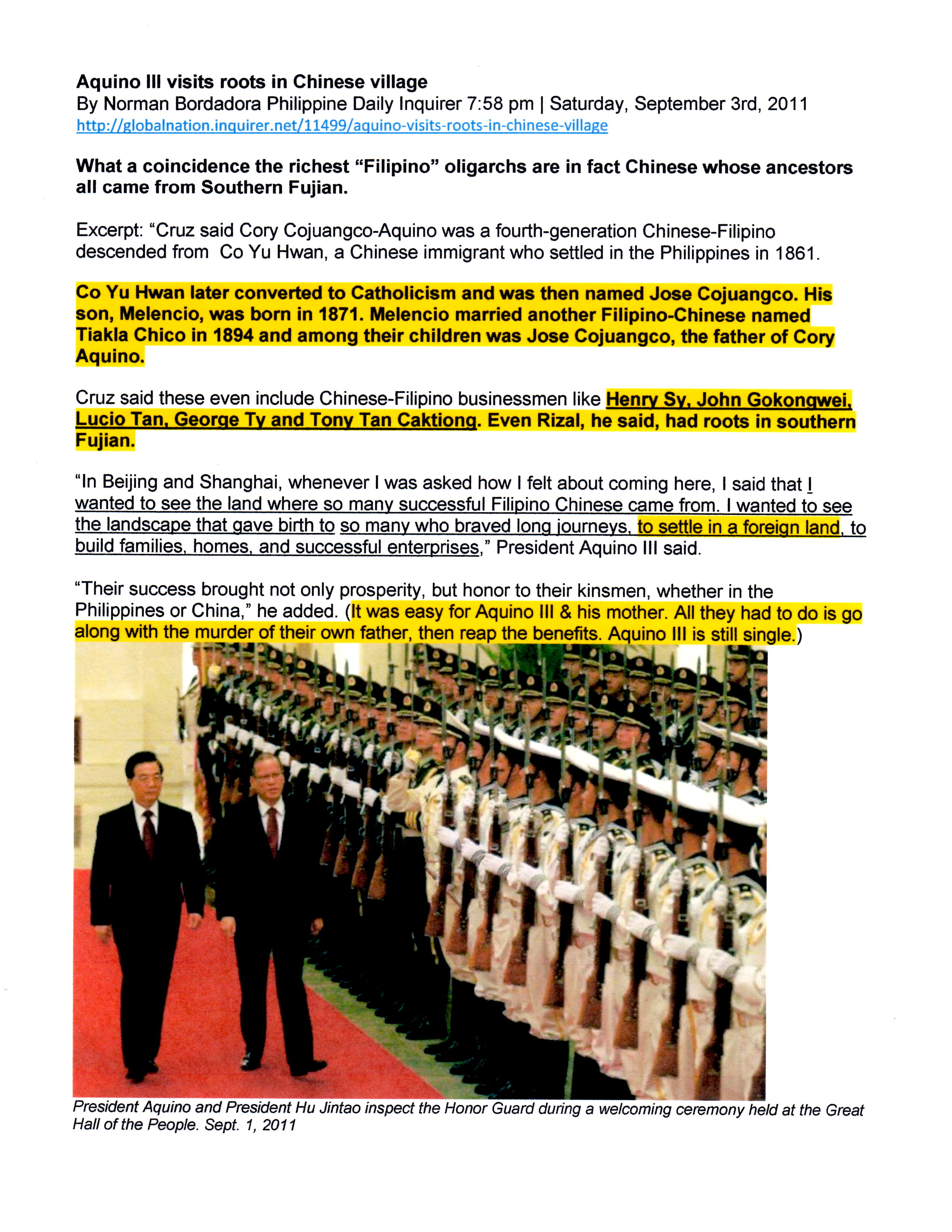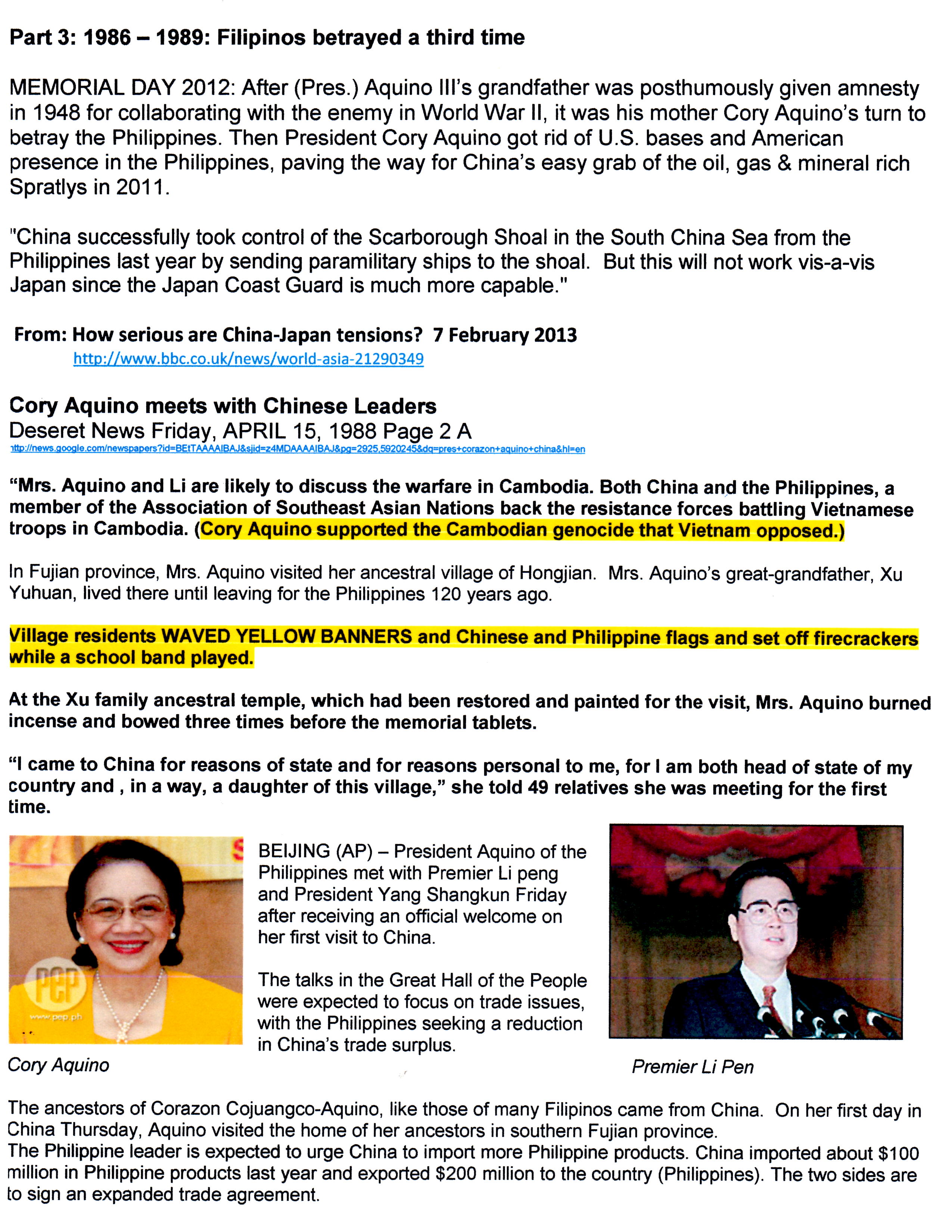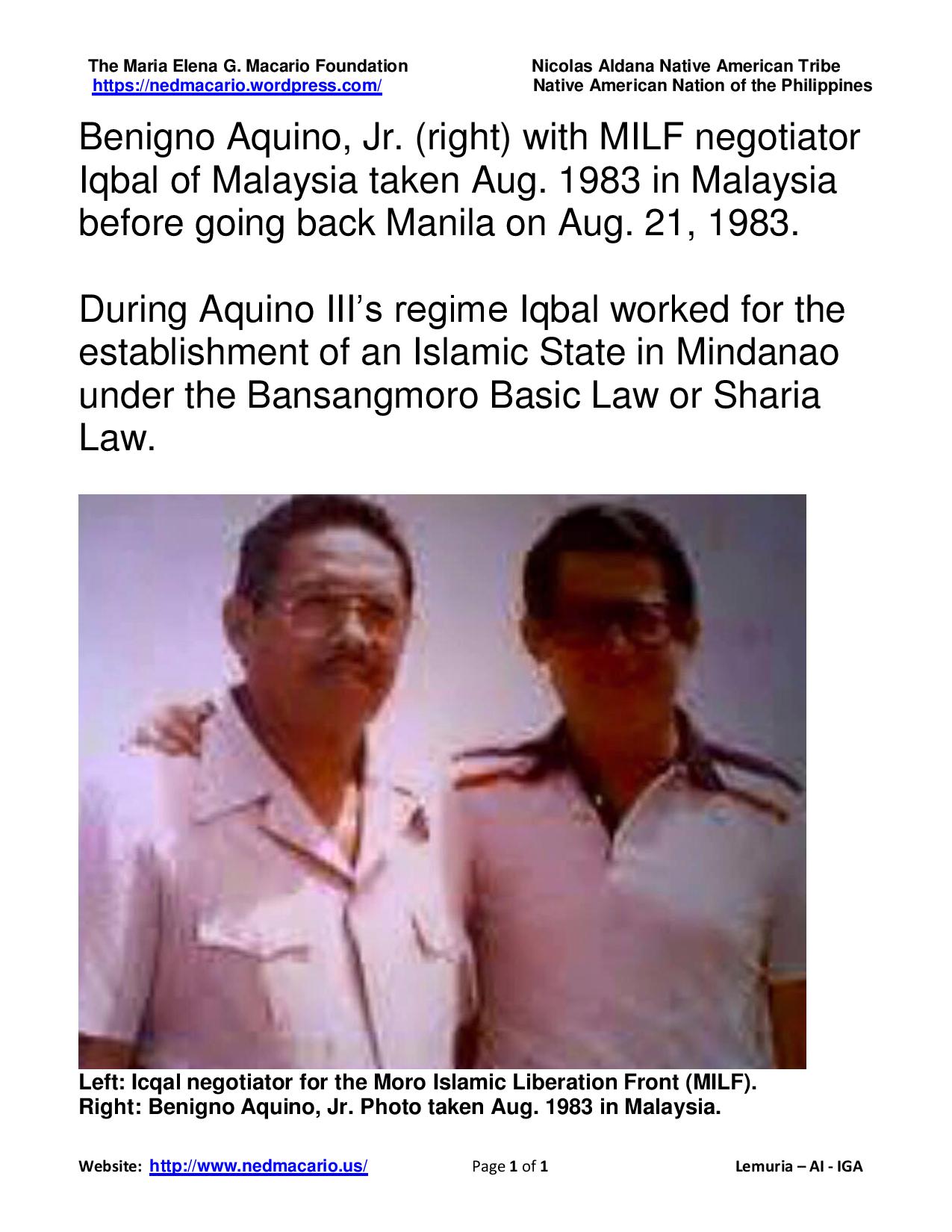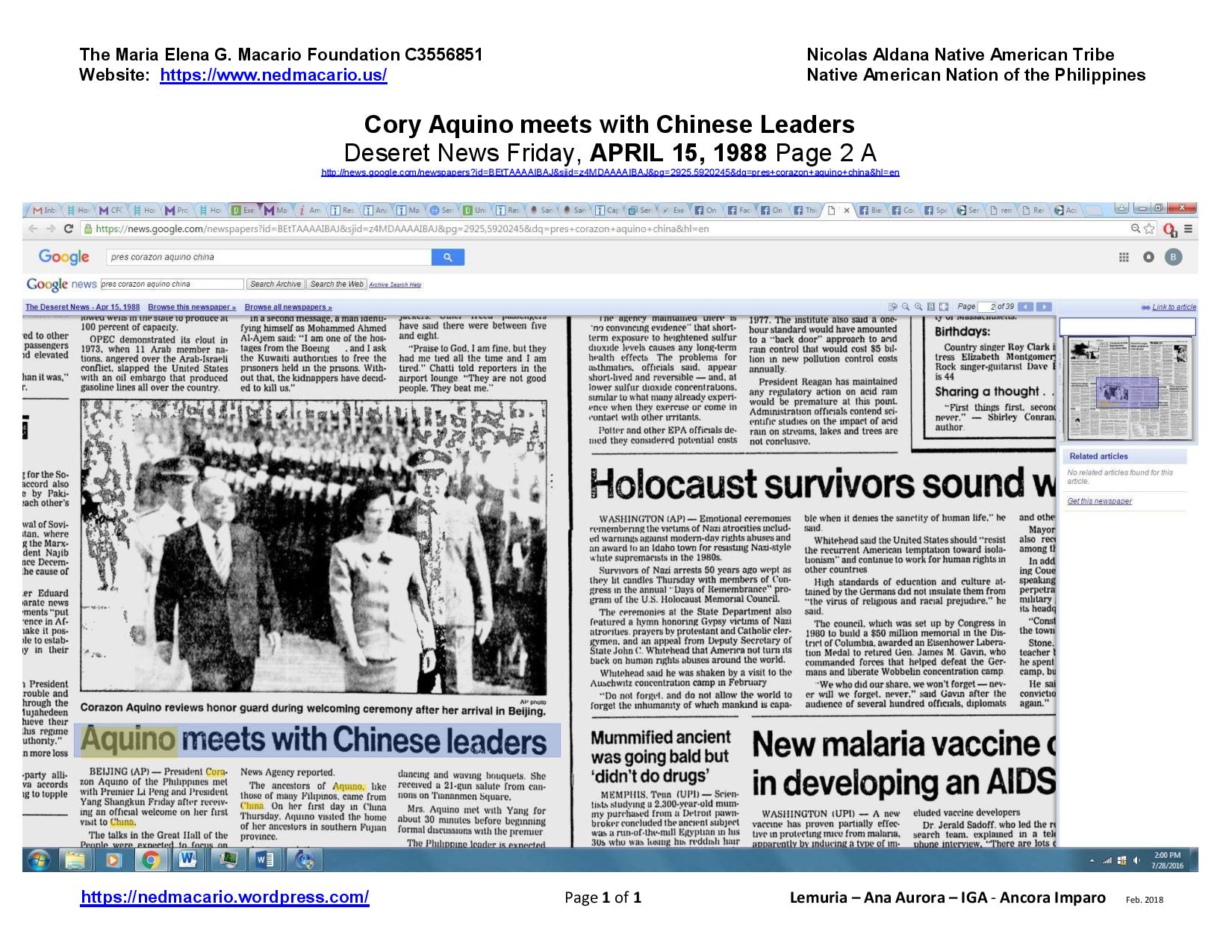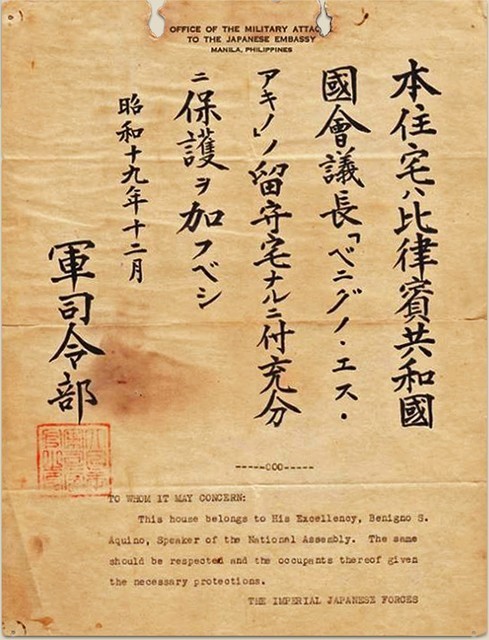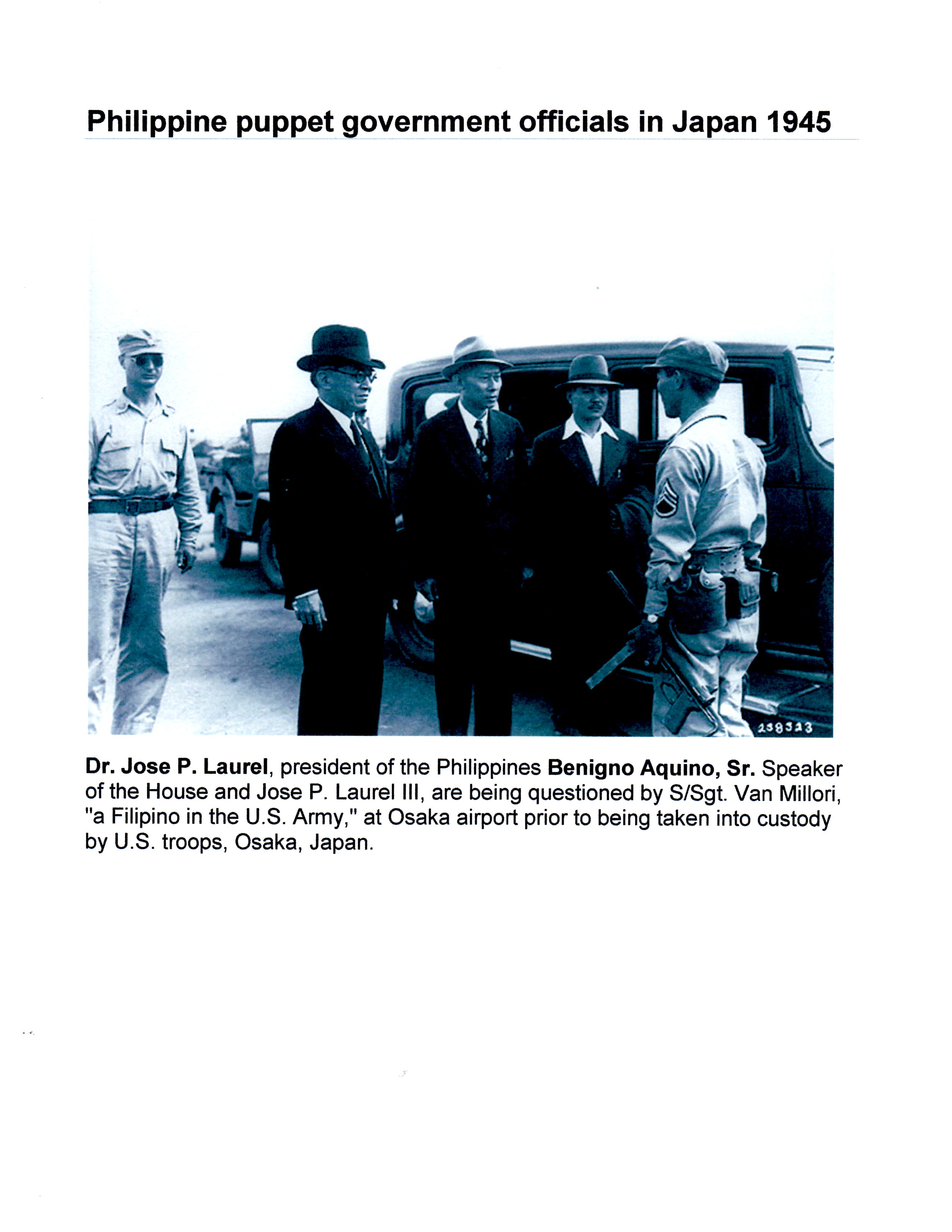
A notice from Japanese Military Attache – Japanese Embassy c. 1943
TO WHOM IT MAY CONCERN:
This house belongs to His excellence Benigno S.
Aquino, Speaker of the National Assembly. The same
should be respected and the occupants thereof given
the necessary protections.
IMPERIAL JAPANESE FORCES
Below is page 331 of the book: “In Our Image: America’s Empire in the Philippines” by Stanley Karnow Paperback: 536 pages Publisher: Ballantine Books; (March 3, 1990) ISBN-10: 0345328167 ISBN-13: 978-0345328168
http://www.amazon.com/In-Our-Image-Americas-Philippines/dp/0345328167
In April 1946 Roxas won over Osmena in the electio for Commonwealth President of the Philippines. Manuel A. Roxas was agreeable to the 23 Navy and 13 Army bases and installations in addition to Clark Air Base and Subic Naval Base. He told U.S. High Commissioner Paul V. McNutt: “You can have what you want.”
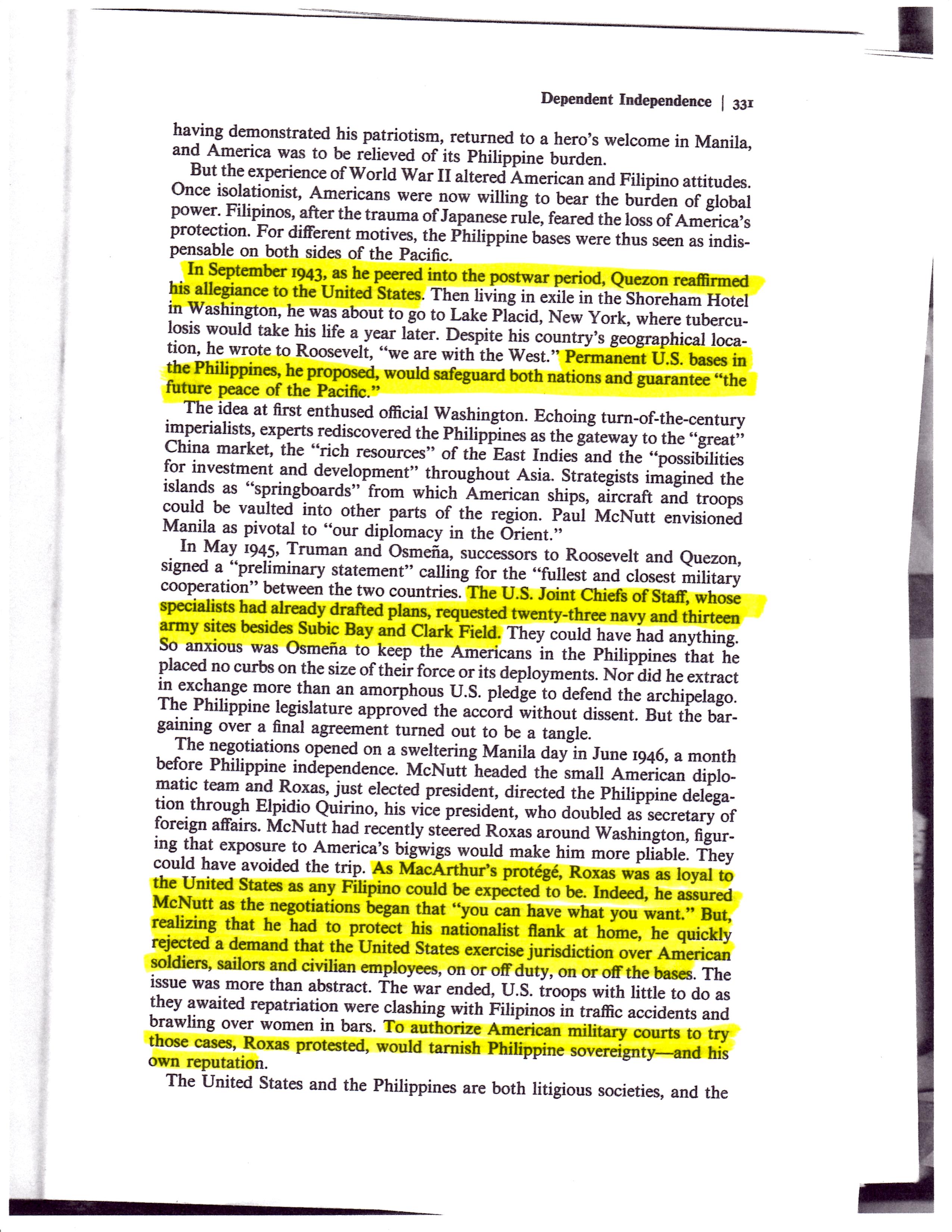
But when the U.S. demanded U.S. jurisdiction over American soldiers, sailors and civilian employees, whether on or off duty, on or off the bases, Roxas objected.
Perhaps this photo below would explain why despite being exonerated by Gen. MacArthur, Roxas would not allow U.S. jurisdiction over American men in uniform and even civilian employees. He was guilty of treason.
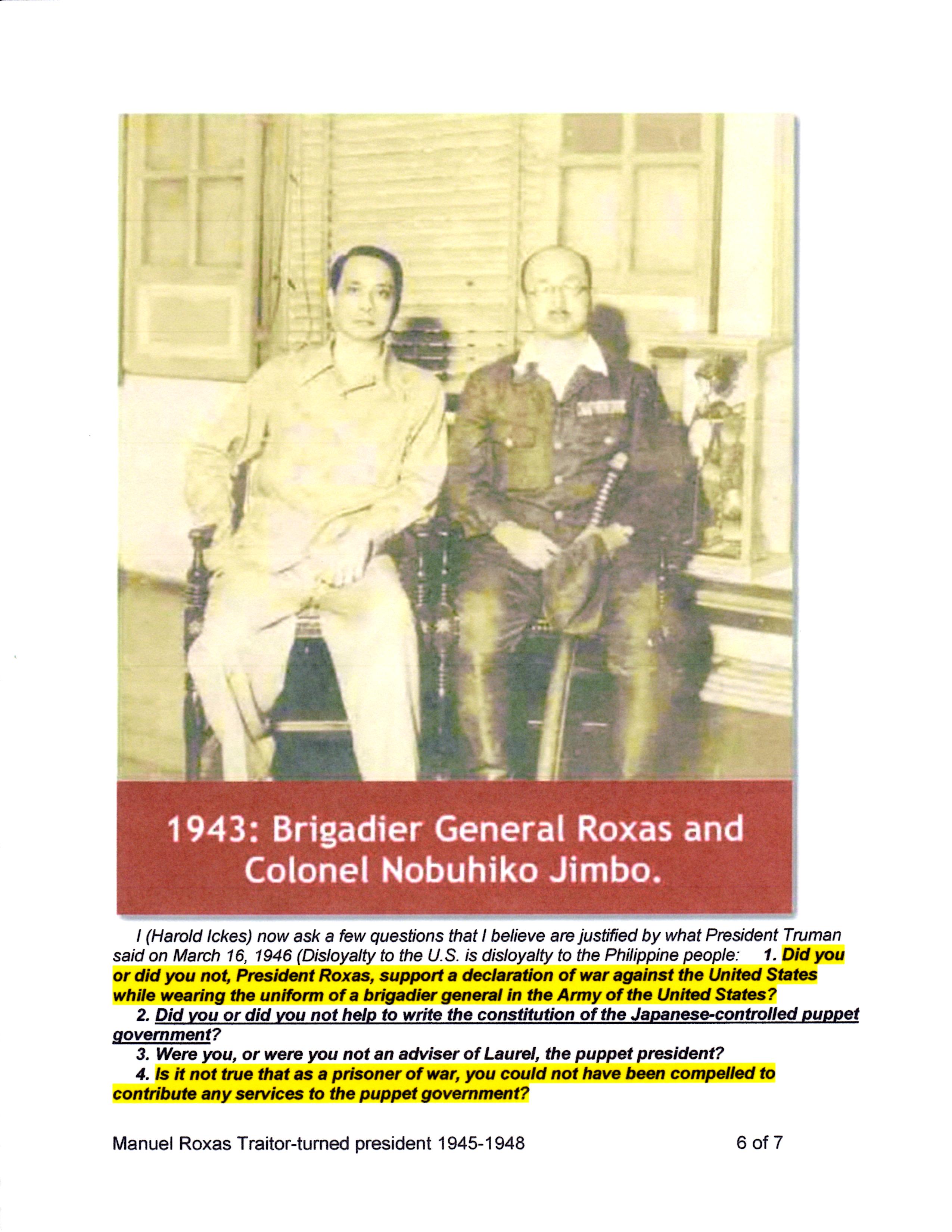
Manuel A. Roxas sought independence to escape justice for his war crimes. However it is null and void considering there was no referendum held to ask the Filipino people if we wanted to secede from the U.S. and break our Pledge of Allegiance to the U.S. flag. In essence, the Filipinos were forced to embrace treason to this day.